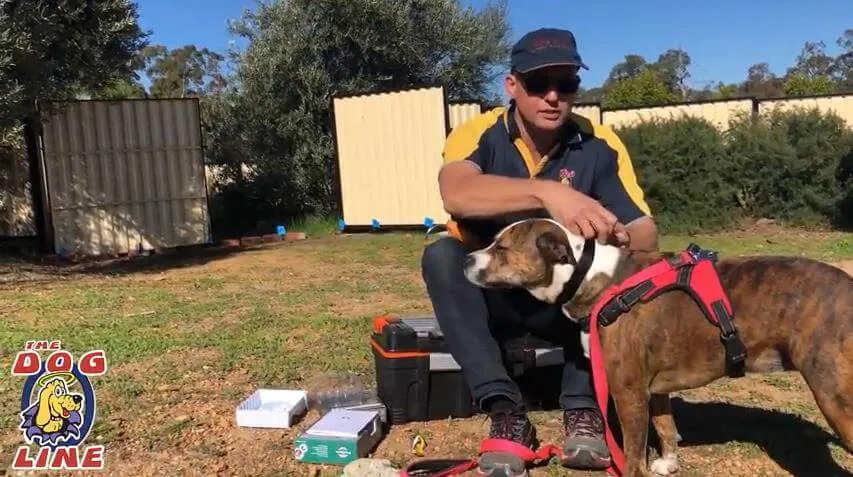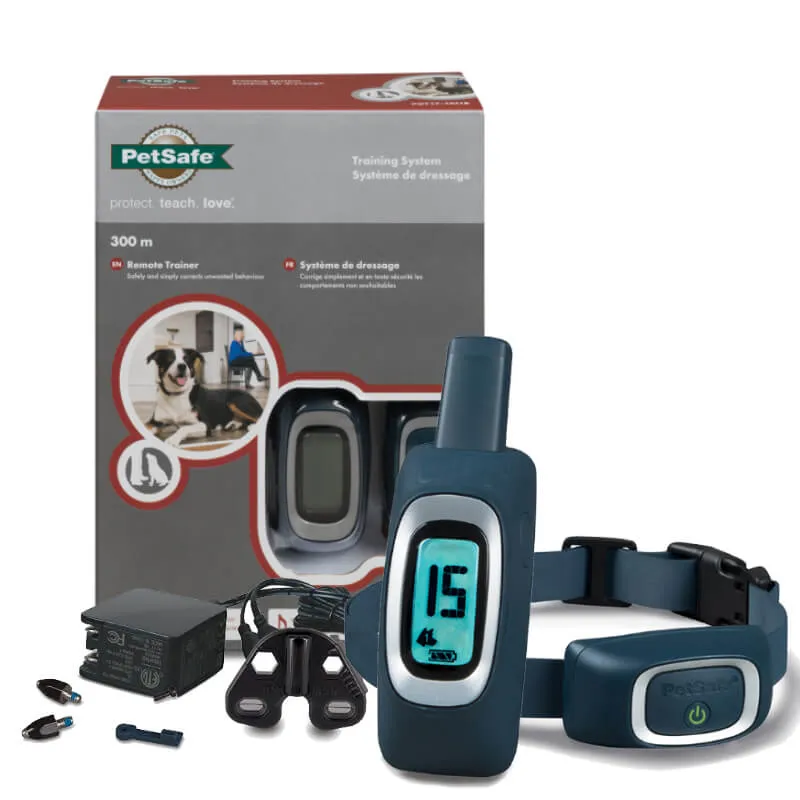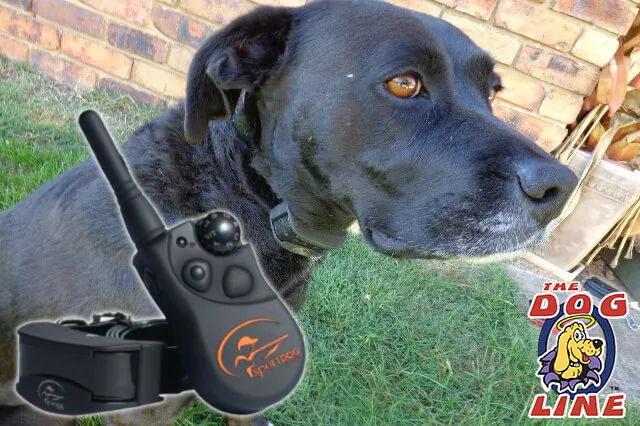Achieving a reliable “come” command, or recall, is paramount for any dog owner. It’s not just about convenience; it’s a critical safety measure that can protect your dog from dangerous situations. While traditional methods are often effective, some dogs, particularly those with strong prey drives or a tendency to wander, may require additional tools to establish consistent recall. This is where remote training collars, often referred to as shock collars, can become a valuable asset. When used correctly and responsibly, understanding how to train dog to come with a shock collar can transform your dog’s obedience and ensure their safety and freedom.
This comprehensive guide will walk you through the proper and ethical use of a shock collar to teach your dog a dependable recall, alongside addressing other common behavioral challenges. We’ll emphasize responsible usage, proper fitting, and the crucial balance of positive reinforcement to build a strong, trusting relationship with your canine companion.
I. Understanding and Preparing for E-Collar Training
1. The Role of Remote Trainers in Dog Training
Remote training collars, also known as e-collars or electronic collars, function as an “invisible leash” that can extend your communication with your dog over long distances. They deliver various forms of feedback, typically a tone, vibration, or static stimulation, allowing you to reinforce commands or correct unwanted behaviors even when your dog is far away. The goal is not punishment, but rather to gain your dog’s attention and clearly communicate desired actions, ultimately enhancing their understanding and responsiveness. With proper technique, these tools can significantly improve your dog’s listening skills and overall obedience, helping you to train your dog to listen more effectively in various environments.
2. Selecting the Right Shock Collar and Ensuring Proper Fit
Before you begin training, ensuring the shock collar is correctly fitted is crucial for both effectiveness and your dog’s comfort. An ill-fitting collar can be ineffective or, worse, cause discomfort.
Follow these essential steps for proper fitting:
- Make sure the collar is turned off before placing it on your dog.
- Do not fit the collar while your dog is sitting; allow them to stand comfortably.
- Position the receiver box on the side of your dog’s neck, ensuring the contact points make good contact with the skin.
- Check the fit by inserting one finger between the contact point and your dog’s neck. The collar should be snug but not tight.
- Let your dog wear the collar for a few minutes to get comfortable with it before training.
- Recheck the collar periodically to ensure it maintains a perfect fit.
- You can then turn the collar on to test its function.
 Dog owner demonstrating the correct fit of a shock collar around a dog's neck.
Dog owner demonstrating the correct fit of a shock collar around a dog's neck.
Pro Tip: Allow your dog to wear the e-collar for a few days or even a week without any active training or stimulation. This helps prevent your dog from becoming “collar-wise,” meaning they associate corrections only with wearing the collar. Instead, they will understand that the correction is a consequence of their behavior, regardless of the device.
3. Introducing Tone and Finding Your Dog’s Recognition Level
The first step in e-collar training is to introduce the tone and then find your dog’s “recognition level” for static stimulation. This is the lowest level of stimulation your dog responds to with a subtle change in behavior, not pain.
Begin by selecting a quiet, comfortable location with minimal distractions. Ensure both the handheld transmitter and the receiver collar are fully charged.
- Start with the tone button.
- Spend 10-15 minutes per day for 2-3 days helping your dog understand the tone.
- Associate the tone with rewards and praise; many trainers use the tone as a warning signal before stimulation.
- Push the tone button for 2 seconds, then immediately reward your dog with verbal praise or a treat when you release it.
- Allow 2-5 seconds before repeating the process.
 Remote dog trainer with handheld transmitter and receiver collar for tone and static stimulations.
Remote dog trainer with handheld transmitter and receiver collar for tone and static stimulations.
Quick Tip: Vary the rewards during tone training to keep your dog engaged and motivated. Once your dog consistently anticipates a reward when they hear the tone, you’ve successfully completed this phase.
Next, identify your dog’s recognition level for static stimulation:
- Start with the lowest level of stimulation on your remote trainer.
- While your dog is distracted or moving naturally, briefly press the stimulation button (less than a second).
- Observe your dog closely for slight changes in behavior:
- A curious look around
- A scratch at the collar
- A slight ear flick or head tilt
- If you see no change, increase the stimulation to the next level and repeat.
- Once you observe a subtle reaction, you’ve found their recognition level. This is the level you will typically use for communication during training.
 A well-fitted remote training collar on a dog's neck, ready for e-collar training.
A well-fitted remote training collar on a dog's neck, ready for e-collar training.
It is paramount to use only high-quality, reputable remote trainers that are designed for safety and effectiveness. Avoid cheap, unregulated devices that could cause harm.
II. Mastering the “Come” Command with a Shock Collar
The “Come” command is arguably one of the most vital commands you can teach your dog. A reliable recall ensures their safety by allowing you to call them away from danger, prevent them from running off, and grant them more freedom in appropriate settings. Using a shock collar can provide the consistency and clarity needed to establish this crucial command, especially for dogs who struggle with distractions.
1. Foundations of a Reliable Recall
Before integrating the shock collar, ensure your dog has a basic understanding of the “come” command with positive reinforcement in a low-distraction environment. The e-collar is a communication tool to reinforce the command, not to teach it from scratch or to replace positive motivation. Always pair the e-collar feedback with verbal commands and follow up with praise and rewards.
2. Step-by-Step Guide: Training “Come” with a Shock Collar
This method utilizes the shock collar to add clarity and urgency to your “come” command.
- Preparation: Ensure your dog is wearing the e-collar correctly at their recognition level. Have treats or a favorite toy ready.
- Initial Setup: Start in a safe, enclosed area with minimal distractions, like your backyard, with your dog on a long leash (15-30 feet).
- The Process:
- Allow your dog to wander a short distance away from you.
- When your dog is slightly distracted, press and hold the continuous stimulation button (at their recognition level).
- Immediately and clearly give your “COME” command.
- While holding the stimulation button, gently reel in the long leash to guide your dog towards you. This helps them understand that the stimulation stops when they move towards you.
- As soon as your dog starts moving towards you, or as they take their first step in your direction, release the stimulation button.
- As your dog reaches you, enthusiastically praise them with verbal praise, petting, and a high-value treat or play.
- Repeat: Allow your dog to wander off again and repeat the process multiple times in short sessions (5-10 repetitions per session).
- Increase Distance & Distractions: Gradually increase the distance, remove the long leash (in a safe, enclosed area), and introduce controlled distractions as your dog’s recall improves. Always maintain consistency.
 Dog eagerly responding to a "come" command, guided by a remote training collar.
Dog eagerly responding to a "come" command, guided by a remote training collar.
The key is that the stimulation is on when your dog is not coming and off the moment they start responding to the command. This helps them associate coming to you with the cessation of the sensation.
3. Troubleshooting Common Recall Challenges
- Ignoring Stimulation: If your dog consistently ignores the stimulation at their recognition level, briefly increase the level by one step and observe. If there’s still no response, try another step up. The goal is a subtle reaction, not a yelp or extreme discomfort. Never jump multiple levels at once.
- Distraction Overload: Don’t introduce high-level distractions too soon. Master recall in low-distraction environments first, then gradually build up to more challenging scenarios.
- “Collar-Wise” Behavior: If your dog only comes when wearing the collar, it means the initial “wear and get comfortable” phase wasn’t effective enough. Go back to basics, let them wear the collar for extended periods without training, and vary the training environments.
- Fear/Avoidance: If your dog shows fear or avoids you during training, stop immediately. Re-evaluate the stimulation level (it might be too high), and consider seeking guidance from a professional e-collar trainer. The goal is a confident, happy recall, not fear.
III. Expanding E-Collar Training: Other Essential Commands and Behavior Correction
Once your dog has mastered the “come” command, you can use the e-collar to reinforce other basic obedience commands and correct specific unwanted behaviors. Remember to always pair the e-collar feedback with your verbal commands and follow through with positive reinforcement.
1. Basic Commands for a Well-Behaved Dog
Beyond recall, a shock collar can effectively enhance communication for core commands.
- The “Sit” Command:
- Place a separate non-metallic collar above the e-collar and attach a training leash.
- Hold the leash and the remote trainer in one hand.
- Guide your dog into the sitting position with your free hand or a treat lure.
- As you guide, press and hold the stimulation button (at their recognition level).
- Immediately give the “SIT” command.
- Release the stimulation button as soon as your dog is in the sitting position.
- Praise your dog enthusiastically and offer a treat.
- Allow your dog to move, then repeat the process until they understand the command.
 A dog calmly sitting on a couch, demonstrating a successful "sit" command during e-collar training.
A dog calmly sitting on a couch, demonstrating a successful "sit" command during e-collar training.
- The “Stay” Command:
- Place your dog in their designated “stay” spot after giving the “sit” or “down” command.
- Walk a few feet away, staying within sight.
- If your dog attempts to leave the spot, immediately press the stimulation button and give the “STAY” command.
- Hold the button until your dog returns to their spot.
- Once they settle, release the stimulation, praise, and reward them.
- Gradually increase distance and duration as they master the command.
 Dog holding a "stay" position with focus, supported by remote dog training.
Dog holding a "stay" position with focus, supported by remote dog training.
- The “Heel” Command:
- Keep your dog on a short leash, walking right beside you.
- Slowly release some tension on the leash.
- If your dog moves away from your side, press the stimulation button and immediately give the “HEEL” command.
- Use the leash to gently guide your dog back into the heel position.
- Release the stimulation button as soon as your dog returns to your side.
- Praise your dog and offer a food treat. This can also help you teach your dog to stop pulling on the leash during walks. You can also learn how to train a dog from pulling when walking to ensure pleasant outings.
 A dog walking closely beside its handler, practicing the "heel" command with an electric training collar.
A dog walking closely beside its handler, practicing the "heel" command with an electric training collar.
2. Correcting Unwanted Behaviors
E-collars are also effective for interrupting and correcting persistent unwanted behaviors. When teaching your dog strategies to stop your dog from pulling during walks, for example, remember that consistency is key.
- Jumping on People:
- Set the stimulation level one step higher than your dog’s recognition level.
- As soon as your dog begins to jump on someone, press the stimulation button.
- Give the “SIT” command.
- Release the stimulation button immediately once your dog sits down.
- Praise your dog. Practice this exercise in various locations and with different people as distractions. This method can also be adapted to stop unwanted jumping on furniture.
 A dog jumping on a person, an unwanted behavior that can be corrected with a remote trainer.
A dog jumping on a person, an unwanted behavior that can be corrected with a remote trainer.
- Digging in Garden Beds:
- Choose a stimulation level one step higher than your dog’s recognition level.
- Allow your dog to wear the receiver collar for a few minutes indoors, then let them out into the yard.
- Ensure no other people or pets are in the area so your dog doesn’t associate the stimulation with them.
- Position yourself where your dog cannot see you.
- Wait for your dog to start digging. As soon as they do, press the stimulation button.
- Release the button as soon as your dog stops digging.
- Wait a few moments, as your dog might try digging in a different spot. If they ignore the stimulation, increase the level by one step.
 A dog caught in the act of digging in a garden bed, a behavior suitable for e-collar correction.
A dog caught in the act of digging in a garden bed, a behavior suitable for e-collar correction.
- Chasing Cars and People:
- Ensure your dog fully understands and masters the “COME” command first.
- Choose a stimulation level one step higher than their recognition level.
- Set up a controlled scenario where your dog is likely to chase something (e.g., a friend on a bicycle or jogging).
- Hold the leash with a firm grip (initially) for safety.
- As soon as your dog starts to chase, give the “COME” command and press and hold the stimulation button until your dog stops chasing.
- Once your dog starts coming back to you, slowly walk backward while repeating the “COME” command.
- Praise your dog and give treats as soon as they return to you.
 A small dog in pursuit, illustrating the dangerous chasing behavior that effective recall training can prevent.
A small dog in pursuit, illustrating the dangerous chasing behavior that effective recall training can prevent.
- Excessive Barking (Quiet Command):
- Select a stimulation level one step higher than your dog’s recognition level.
- When your dog barks excessively, press the stimulation button.
- Immediately give the “QUIET” command.
- If your dog does not respond, increase the stimulation level one step higher.
- Praise your dog once they become quiet.
 A dog barking excessively, a common nuisance that can be addressed with remote training collars.
A dog barking excessively, a common nuisance that can be addressed with remote training collars.
IV. Ethical Considerations and Best Practices
Using a shock collar is a significant responsibility. It should always be seen as a communication tool to enhance understanding, not a punishment device. Here are some ethical considerations and best practices:
- Start with positive reinforcement: Always attempt to teach commands and correct behaviors with positive, reward-based methods first. The e-collar is a supplementary tool for clarity and consistency, especially in high-distraction environments.
- Keep it consistent: Consistency in commands, timing, and expectations is key to success with any training tool.
- Balance with positive reinforcement: Always pair e-collar use with praise, treats, and affection. The goal is to motivate your dog to perform desired behaviors, not to simply avoid discomfort.
- Never use in anger: E-collars should never be used as a means of punishment out of frustration. This can damage your bond with your dog and create negative associations.
- Seek professional guidance: If you are unsure about any aspect of e-collar training or encounter difficulties, consult a certified professional dog trainer experienced in e-collar use. They can provide personalized guidance and ensure the tool is used safely and effectively.
- Check regulations: Be aware of local laws and regulations regarding the use of e-collars, as these vary by region.
Conclusion
Training your dog to come reliably with a shock collar is a process that requires patience, consistency, and a deep understanding of responsible tool usage. When implemented correctly, remote training collars can be an incredibly effective tool for enhancing communication, ensuring your dog’s safety, and granting them greater freedom. By following the steps outlined, from proper fitting and finding the recognition level to gradually introducing the “come” command and other essential behaviors, you can build a strong foundation of obedience.
Remember that the e-collar is a means to an end: a well-behaved, safe, and happy dog. Always prioritize positive reinforcement, maintain a calm and encouraging demeanor, and never hesitate to seek expert advice. With dedication and responsible training, you and your canine companion can enjoy a lifetime of clear communication and mutual trust.
